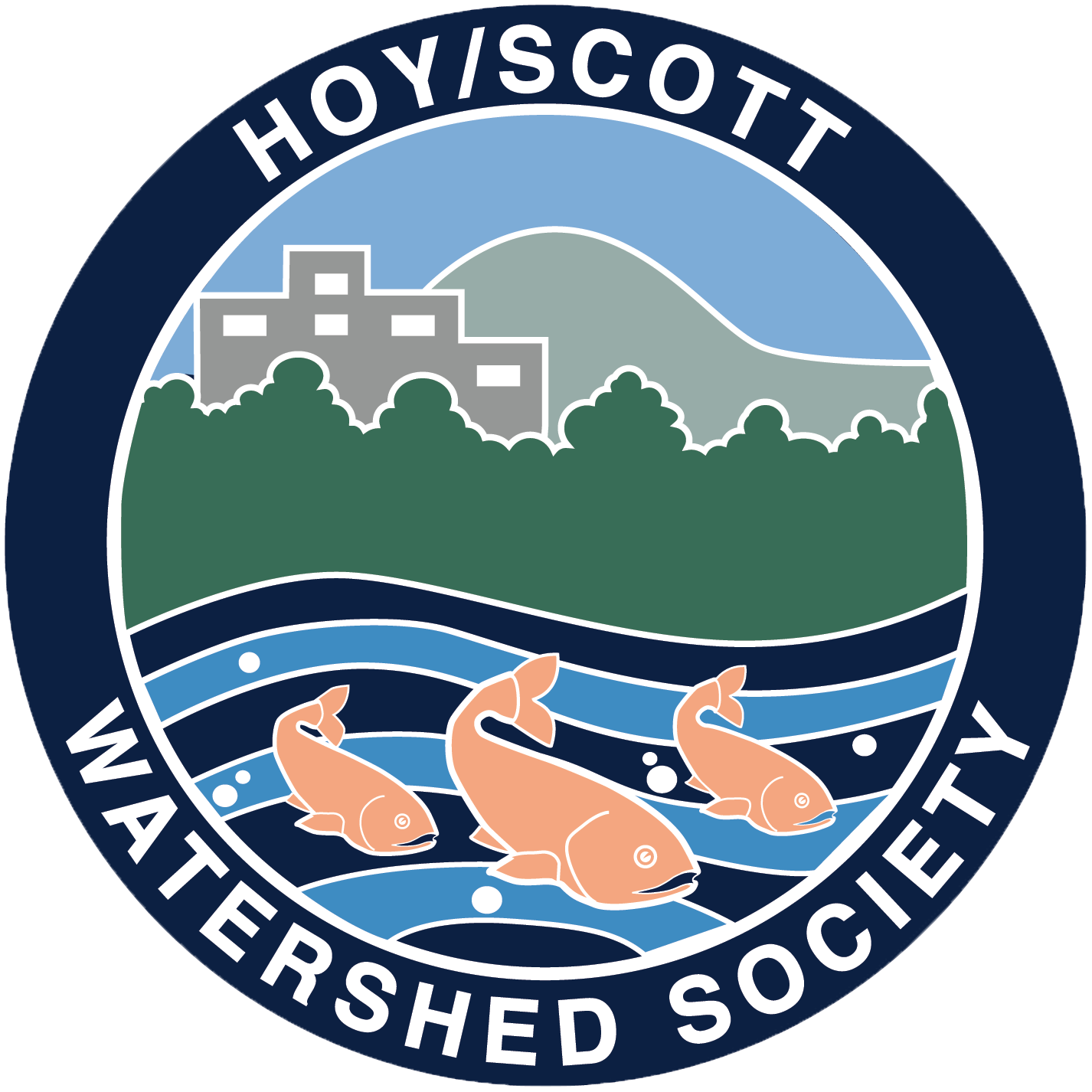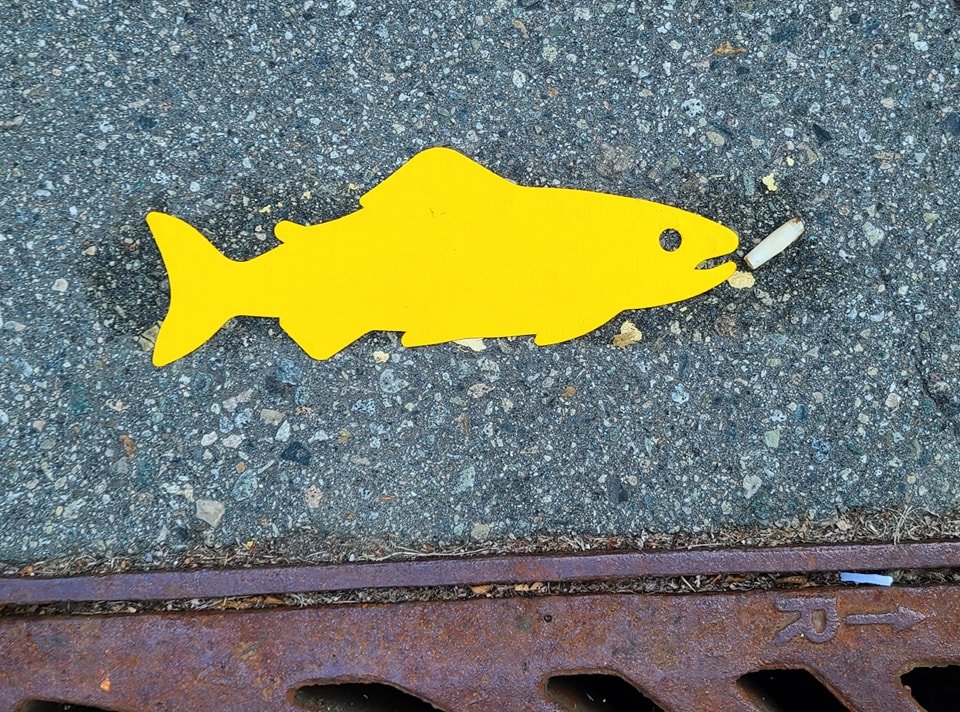Society volunteer, Saki helps pound down a decal east of the hatchery. (HSWS photo)
Society volunteers managed to get more area storm drains marked with bright yellow fish decals before the rains of October and the return of salmon to our streams.
Areas of focus were east of the Hoy Creek Hatchery, along Princess Crescent and northward along Town Centre Boulevard south of Douglas College, as well as drains along Lansdowne Drive from the Coquitlam Crunch Trail down to Guildford Drive.
It is important to note that the water that goes into a storm drain doesn't get processed through a sewage system like household water does, but goes directly into our waterways. Marking our storm drains is an opportunity to help educate the public and to draw attention to having clean streams that help keep our fish safe.
In previous years yellow fish were stenciled on with paint near storm drains, but the Hoy/Scott Watershed Society volunteers use a new method with supplies provided by Fisheries and Oceans Canada. Bright-yellow sticky peel-off decal fish are pounded into place with a rubber hammer.
Please be mindful - everything entering a storm drain ends up in a creek. Creeks contain aquatic life that can’t survive pollution being dumped into the habitat. As members of the public, we all have a duty to steward and protect the environment that we live in. Should you witness any suspected pollution being dumped into a storm drain, please take immediate action to report it to the authorities:
City of Coquitlam Engineering 24-hour emergency (Municipal): 604-927-3500
Observe, Record, Report (Federal): 1-800-465-4336
Report all poachers and polluters (Provincial): 1-877-952-RAPP
Freshly marked for the return of the rain. (HSWS photo)
Fish don’t smoke! We’re always surprised at how many cigarette butts we see next to storm drains. (HSWS Photo)







